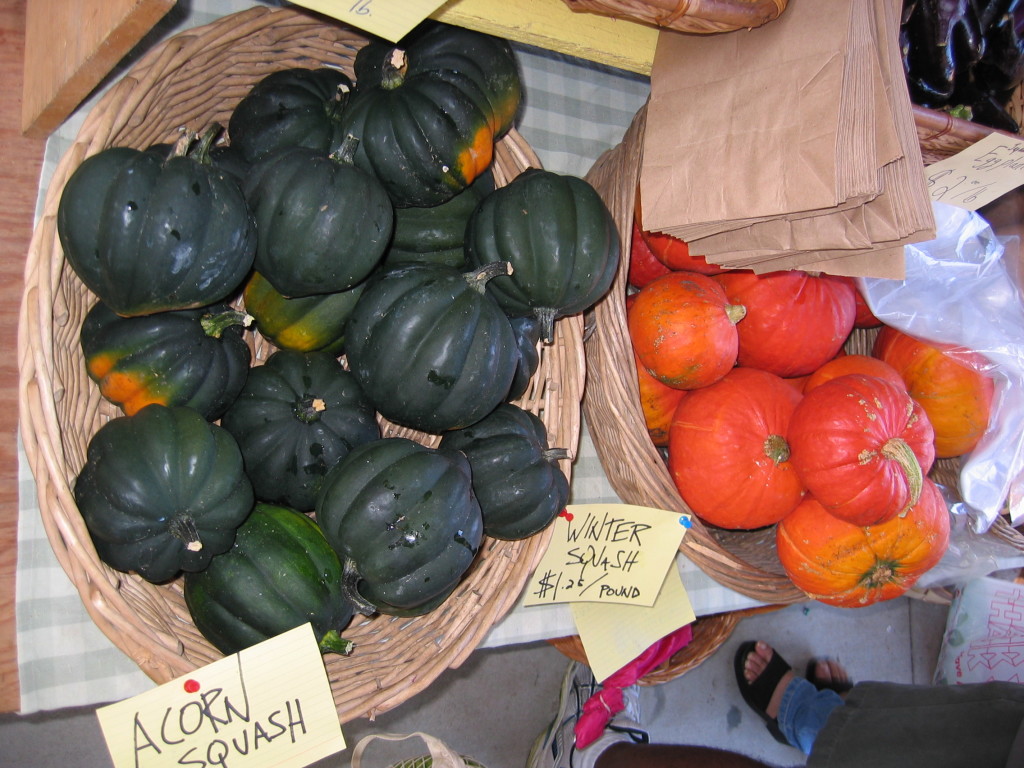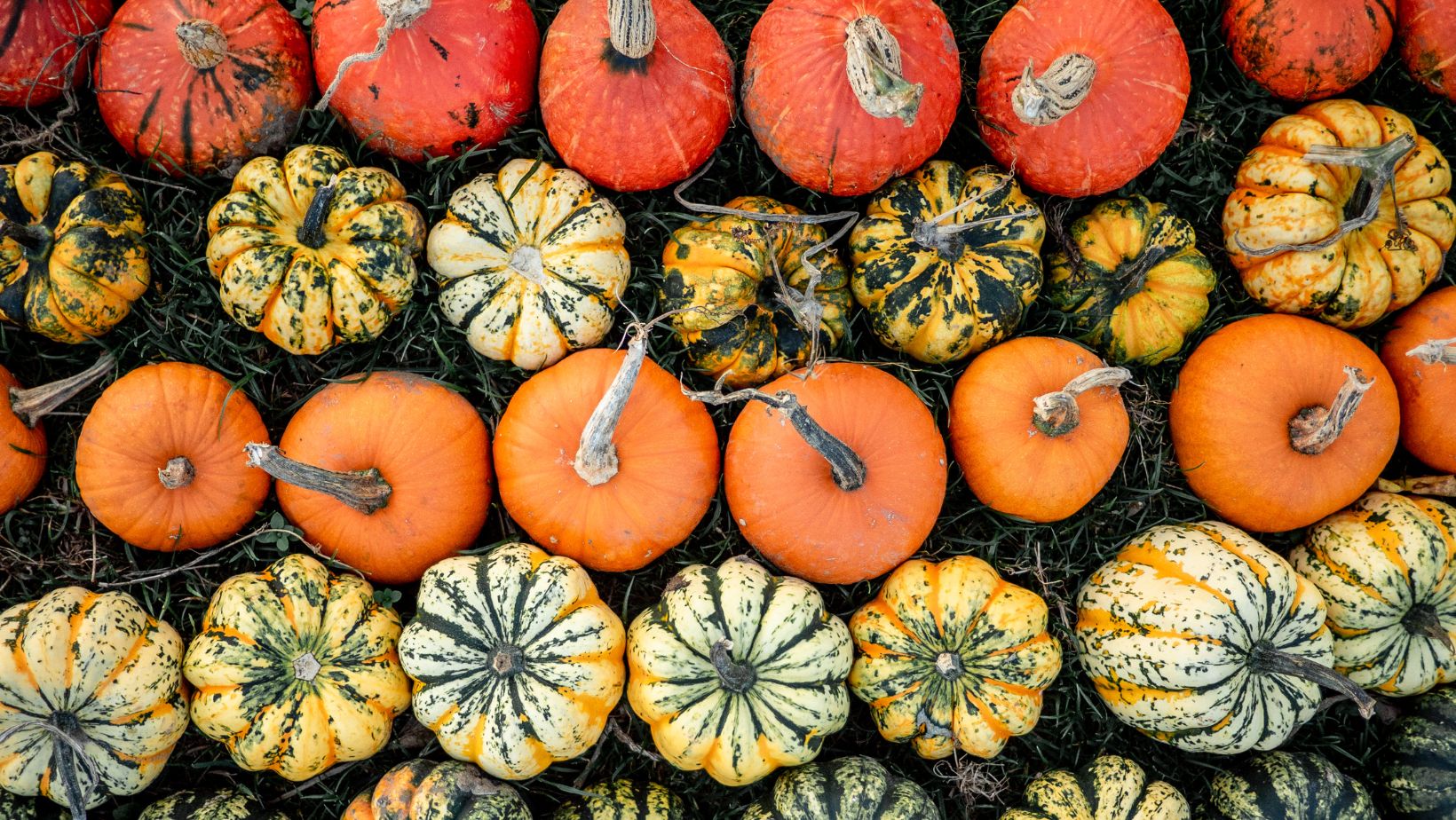by James Cooper, CFSA Local Produce Safety Coordinator
Winter squash are not only very nutrient-dense foods (containing high levels of vitamins A and C), but also have a long storage life and can be stored anywhere from one month (for the table queen variety), to six months for types such as Hubbard, thus prolonging the farmer’s season by generating cash-flow into the off-season.
| TYPE | LENGTH OF STORAGE | RELATIVE HUMIDITY | TEMPERATURE CONDITIONS |
| WINTER SQUASH/ HUBBARDS |
5-6 months | 70-75% | 50-55 F |
| ACORN | 5-8 weeks | 70-75% | 50 F |
| BUTTERNUT/TURBAN/ BUTTERCUP |
2-3 months | 50-75% | 50 F |
| PUMPKINS | 2-3 months | 50-75% | 50-55 F |
Pumpkins and winter squash are harvested September through October. Sometimes harvesting may start in mid-August to early September, which requires good handling and storage of the pumpkin fruit before selling to the public in October. Even after they have matured and are removed from the vine, pumpkins and winter squash are still alive. The object of curing and storing them is to prolong the post-harvest life of the fruit. Mature pumpkins and winter squash store better than immature fruit. When mature, winter squash, such as Butternut, Acorn, and Hubbard, have hard skins that resist puncture from your thumbnail. The mature fruit has a dull and dry skin compared to the fresh, bright sheen of the skins of immature fruit.
Keep in mind that dead vines do not indicate maturity in pumpkin and winter squash. When vines die prematurely from disease or drought, for example, the fruits are probably immature and, therefore, will not store successfully. All pumpkins and winter squash should be well matured and free from injury and decay when stored. They should be kept dry and pro- vided with good air circulation. It is important to control the humidity since high humidity will enable de- cay, and lower humidity will cause excessive weight loss. When winter squash are taken out of storage, they should be marketed immediately.

The pumpkin fruit is harvested when it is uniformly orange, and the rind is hard. Green immature fruits may ripen during the curing process but not after the vines are killed by frost. Handle the fruit with care as to avoid cuts and bruises. Harvest the fruit by cutting it off the vine, leaving 3-6 inches of the stem attached to the fruit. This makes the fruit look more attractive and more marketable, and less likely to be attacked by fruit rot pathogens at the point of stem attachment. Make sure the fruits are well dried before setting into a shed to cure. Butternut, Hubbard and other squash types do not need to be cured as the benefits are less compared to pumpkins, while curing is very detrimental in Acorn types as it leads to decline in quality.
Store the fruits in a cool, dry place in a single layer with enough space in between the fruits to allow for good air circulation. Ideal storage winter squash is off the ground on wooden pallets. The optimal storage condition is 50-55F with a relative humidity of 50-70 percent because high humidity leads to settling of moisture on fruit surfaces, which increases decay of the fruit and low relative humidity may cause dehydration of the fruit. Store the fruits away from apples or any other fruits producing ethylene gas as they ripen, which speeds up the ripening process. Check the fruits regularly and remove the rotten ones, as they will spread pathogens in the storage area.
Often it is not feasible to harvest pumpkins and winter squash early and store them until they can be marketed. Therefore, they must be stored in the field. If vines and fruit are healthy, storage in the field can be successful for a few weeks. If the vines die back, damage to the fruit from sun, disease and insects is more likely. Even if it is difficult to provide the ideal conditions, storing the fruit in a shady, dry location, with fruit off the ground, is preferable to leaving the fruit out in the field. As you plan for storage and marketing, keep in mind that the market for pumpkins and winter squash seems to get earlier every year. Fall decorative displays include pumpkins and winter squashes, and those begin showing up after Labor Day. Happy Harvesting!
You can learn more about post-harvest handling and Good Agricultural Practices on our website or contact us about our Good Agricultural Practices (GAP) trainings and mock audits.


